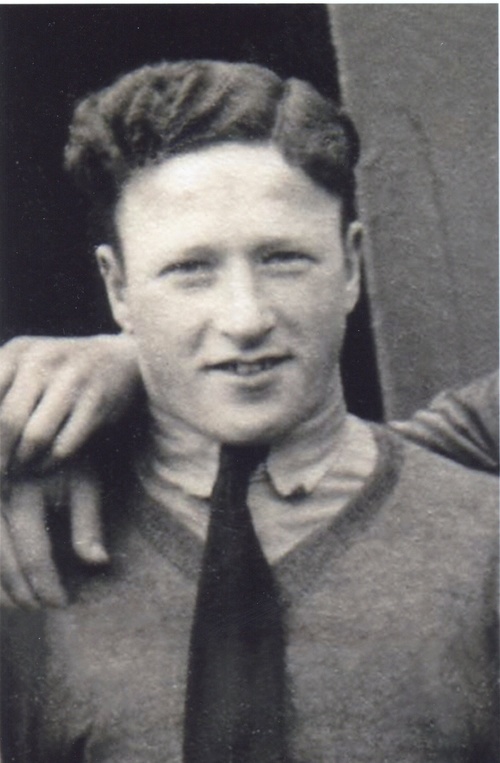
Auction: 19003 - Orders, Decorations and Medals
Lot: 313
(x) An exceptionally poignant ‘Battle of Britain’ group of six awarded to Flight Lieutenant H. Owen, Royal Air Force, an Air Gunner in Blenheim aircraft who forged a long and successful career, but was ‘greatly troubled by what he did and saw during the War’
1939-45 Star, clasp, Battle of Britain; Air Crew Europe Star, clasp, Atlantic; Africa Star; Burma Star; Defence and War Medal 1939-45, unnamed as issued, swing-mounted but missing wearing pin, good very fine (6)
Henry ‘Harry’ Owen was born on 4 June 1921 at Durham, England, and educated at Osborne Grammar School, West Hartlepool. He joined the Royal Air Force in 1938 as a boy entrant, being sent to No. 1 Electrical and Wireless School at Cranwell where he passed out as Aircraftman 1st Class in September 1939. After qualifying as an Air Gunner at No. 1 Air Armament School at Manby the following month, he joined No. 219 Squadron at Catterick.
Promoted Leading Aircraftman in February and Sergeant in May 1940, Owen spent eight months serving as an Air Gunner on Blenheim light bombers. In July 1940 his squadron converted to Beaufighters and subsequently all Wireless Operators and Air Gunners were allocated to new units, Owen being transferred to No. 235 Squadron which flew the long-range fighter version Blenheim Mk. IV.F., armed with four .303 inch machine guns in a special gun arrangement beneath the fuselage. Here he paired-up with Sergeant Kenneth ‘Skipper’ Naish, a 1936 direct entrant himself and newly transferred from Thorney Island.
The morning of the 24th August 1940 offered a gentle sunrise and relative calm over the aerodrome at Detling:
‘Despite the chaotic conditions and increasing threats, outside ground crew filled sandbags and played an impromptu game of cricket using the spade as a bat as someone tossed a cricket ball. Elsewhere on the station new panes of glass were being fitted. The smell of cut grass mingled with the stench of 100 percent high-octane fuel and oil, interspersed with the salty sea breeze’ (Coastal Dawn, Blenheims in Action, refers).
At 15.40 p.m. Ventnor RDF reported a large enemy formation approaching the Isle of Wight and upon notification, controllers at 11 Group ordered Squadron Leader Ernest McNab to scramble his fledgling Canadian pilots of No. 1 (R.C.A.F.) Squadron, some of whom had less than 20 hours of flying experience and only a limited period on aircraft recognition. At around the same time, three Blenheim fighters were scrambled from Detling to give protection over Portsmouth, Fighter Command being at full stretch. Chaos ensued. Rather than engage the enemy force of approximately fifty Ju. 88s of Lehrgeschwader 1, escorted by Bf 110s of a similar number, the British and Canadian pilots intercepted one another, the Canadians coming down from the 11 o’clock position and despatching Blenheim T1804 - piloted by David Woodger - into the Channel at Bracklesham Bay, near Chicester.
This ‘friendly fire’ incident cast a long shadow over the two pairs of crew who managed to escape. Naish and Owen in Blenheim Z5736 managed to return to base, but both had been slightly injured and the aircraft damaged. In the late afternoon the body of an airman was found by a boat off West Wittering. It was Woodger’s gunner, Sergeant David Wright:
‘The Gunner’s body was riddled with bullets. The limp body was wrapped in blankets and placed on a stretcher.’
The medical orderlies bowed their heads as the Adjutant, Flying Officer Charles Pinnock said:
“I can’t give you a hand;
You’re for the promised land,
My comrade good and true.”
The death of the 18-year-old Gunner, and those of further friends and comrades, would have significant implications on Owen in later life.
He left No. 235 Squadron in July 1941 and was sent on a flying boat instructor course, later joining No. 413 (R.C.A.F.) Squadron in October, to fly in Catalinas. In February 1942 Owen went to No. 240 Squadron and served in the Mediterranean and South-East Asia. Rested in December, he later served as Wireless Operator and Air Gunnery Instructor on Vengeance aircraft at Peshawar, moving in May 1943 to instruct at the Gunnery School in Bhopal. In late 1944 he joined No. 356 Squadron, flying operationally in Burma, Malaya and Siam until May 1945. He retired from the R.A.F. as a Flight Lieutenant on 15 July 1955, working in the U.K. on flight simulators, before emigrating to New Zealand in 1962. According to a first-hand account compiled by a friend in the late 1990s, Owen never got over the war:
‘At some stage after he left the R.A.F., Harry became very depressed. During this time he burnt his log books, photo albums and newspaper cuttings as he wished to have nothing to do with the war. Fortunately he saved his medals and badges which he gave me in 1998. Sometime after he arrived in N.Z. his wife became ill and eventually died of cancer. While she was ill, she was nursed by Shirley who later became Harry’s second wife.’
A man who was always reluctant to discuss the war, Owen died on 19 October 2007 at Whareama Hospital, Nelson, New Zealand, as a result of complications arising from Parkinson’s Disease. He is buried at the Nelson City Council Cemetery.
Sold with copied research and a typed testimony describing the man and history of his medals, as compiled by the present custodian and dated 8 August 2019; the recipient’s original medal riband, bearing the gilt rose applicable to Battle of Britain veterans; a corresponding contemporary miniature dress medal group of six, swing-mounted; two fabric Signaller’s ‘wings’, one of contemporary bullion manufacture.
Reference source:
Coastal Dawn. Blenheims in Action from the Phoney War through the Battle of Britain, pp. 158-163 by Andrew D. Bird.
Subject to 5% tax on Hammer Price in addition to 20% VAT on Buyer’s Premium. For more information please view Terms and Conditions for Buyers.
Sold for
£2,000
Starting price
£1500




